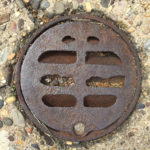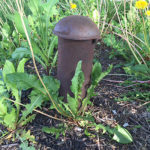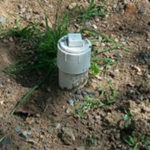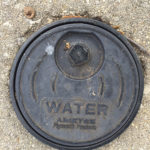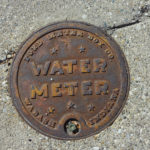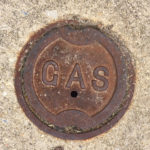What is that pipe sticking out of my lawn? What’s the black cover with the louvers at the curb? What’s that black metal thing I always hit with the lawnmower? There’s a white plastic pipe with a cap sticking out of my driveway?! Can I cut that down so no one can see it?!
These are all questions many homeowners ask regarding external plumbing covers and/or pipes. We’re going to attempt to answer some of the most common questions and pitfalls regarding external pipe and access points for the plumbing system.
For the purposes of this blog we will be talking about areas with municipal sewers. Septic systems, while similar, have different component locations and components.
Plumbing Covers
Identification first. The drainage system, technically referred to as a house or building sewer, starts at 5 feet outside of your house and runs across your property (underground) to the municipal main sewer line located in the street. Depending upon your township, Pennsylvania typically has three configurations you will find regarding access points to the underground pipe.
The first, and most common, and nearest to densely populated areas is a vent box. This is a round cast iron plumbing cover with louvers about 6″ in diameter. Typically, they are black but often get painted. They are flush with concrete or grade and are the vent mechanism for vented house traps. They are almost always at the curb.
The second arrangement for sewers is a mushroom cap. These also black or grey and cast iron or plastic. They too are the vent for the trap. The mushroom cap is typically 6-12″ above the surrounding grade and they are usually located 5′ or more from the curb.
Lastly is the cleanout. These can be cast iron or plastic, white or black, and flush or raised. Unlike the other two, they do not vent. They are there specifically to allow for maintenance of the sewer during a back-up. They usually have a 1.5″ nut in the center, either raised or in relief.
All three of these components are often misunderstood and not treated with the proper care by homeowners. Something as simple as a missing cap on any one of these could be potentially disastrous and cost thousands to fix.
Water Service Covers
The next type of cover we want to address is the water service. There are two basic types.
Curb box lids are 4-5″ diameter lids made of plastic or cast iron and are usually as the name denotes near the curb. The often say “WATER” on them and have a nut or bolt in a recessed notch to allow for removal of the lid. They are flush with grade or concrete and very often have been painted blue by a municipal water utility company or the township.
Meter box lids are the other water service cover type. The covers typically say “WATER” and “METER” on them and also have a recessed nut for securing them. They can be located anywhere from the curb to right outside the house, depending on when they were installed and the specifications of the local water authority.
In both cases these covers contain the access to the main house valve. This is an essential emergency valve and ALL homeowners should know where it is. Some are located in tricky locations. If you have an emergency and it takes the plumber or water company 30 minutes to find this valve, the damage done while locating it could be significant. Knowing where it is will save you the cost of paying your plumber to find it, as that time could be better used applied to the plumbing service needed.
Gas Covers
Lastly, the gas valve cover. This looks almost identical to the water cover but is smaller and usually says “GAS” on it. There is less of a need for homeowners to know about this due to detailed maps kept by your local gas supplier as well as location detection devices they stock on most trucks. The only involvement a homeowner really should have in this case is if the cover is missing. Then, the gas supplier should be called.
Know your system
Some plumbing covers do’s and don’ts:
DO: Know where your plumbing covers are.
DO: Be able to advise the plumber in an emergency, “Hey, there is a cleanout next to the flowers” or some such.
DO: Be aware of these items and if the lids are intact and tight.
DO: Ask a plumber before you cut down any pipe in the lawn or change the type of lid on them. This could lead to them wasting time (and your money) looking for something that has the wrong lid on it.
DON’T: Allow grass, debris, or an unknowing concrete or landscape contractor cover them. This will save him time and you money or damage.
DON’T: Place permanent things over or near them.
DON’T: Drive on them unless they are on a driveway or other drivable surface. The concrete supports the lid to the plumbing covers and driving on them in grass or stone will likely break them.
In short, awareness of these covers can save time, money, and damage. The time it takes to notice and protect these things will pay dividends in the event you need them. Many, many times we come out and a customer spends $1,000 on clearing, replacing, or finding plumbing components they have allowed to be covered or filled with dirt/debris.

